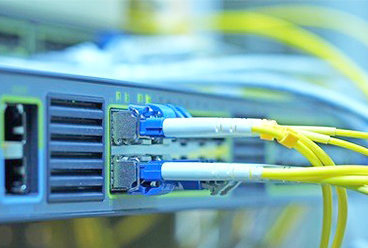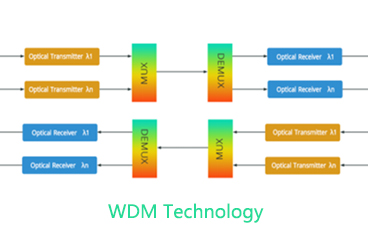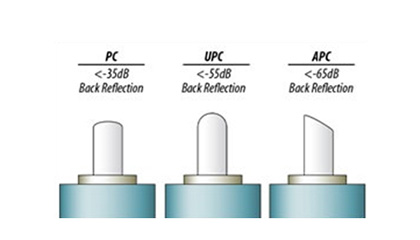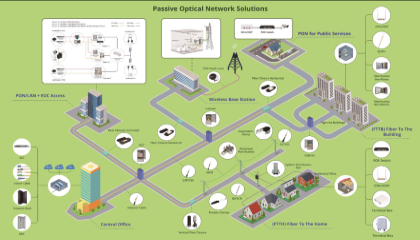SFP+ optical module is a new generation of 10 Gigabit optical module, which has significant advantages such as high density, low power consumption, and lower system construction cost. It has a wide range of applications in engineering, single-fiber bidirectional system engineering and so on. The three structures of SFP+ optical modules are: limiting structure, linear structure and synchronous structure.
The first structure of sfp+ module transceiver is the limiting structure, it is the closest to the existing SFP module transceiver, consist of a laser, TOSA, ROSA and a limiting amplifier.
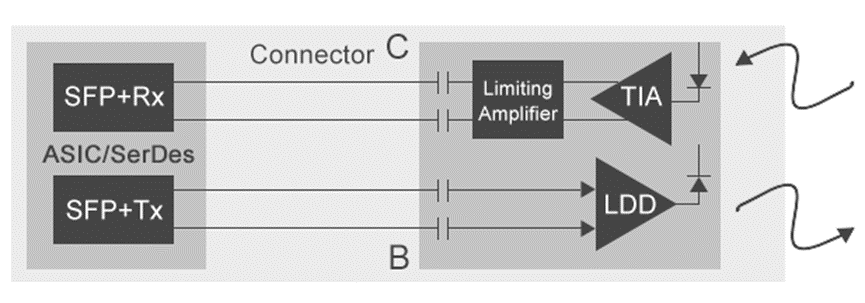
The second structure of SFP+ transceiver is a linear structure, which is adopted multimode fiber mainly used for 10Gbit / s long-distance Ethernet connectivity, which requires the linear light receiving ability.
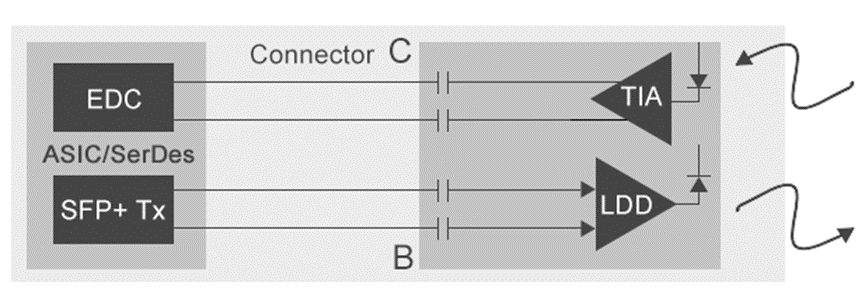
The third structure of SFP+ module transceiver is the synchronization structure, it is fully compatible with the SFP + and is not yet standardized. This structure integrates CDR function in the transmit/receive path, which solved the problem of signal distortion exit in the most high-speed system.
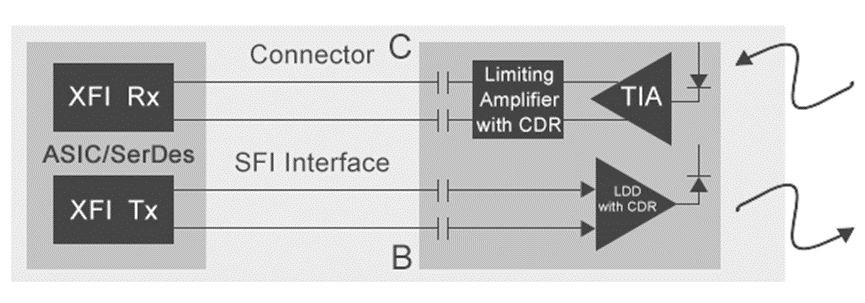
Performance differences between the three structures
(1) At the transmitter
Since the IEEE (Institute of Electrical and Electronics Engineers) and Fibre Channel standards have very strict requirements on the optical interface, and the timing jitter is not calibrated at the transmitter end of the clipping and linear structures, the SFP+ optical modules of these two structures require extremely high quality transmitter. The synchronization structure adds a CDR at the SFP+ transmitter, which can reset the jitter budget within the module and eliminate the forwarding IC between the transmitter ASIC and the module, thereby greatly reducing the jitter performance requirements of the ASIC.
(2) At the receiving end
The difference at the receiving end is very obvious between clipping, synchronizing and linear structures. In the limiting structure, the jitter of the signal after photoelectric conversion is not eliminated. In addition, there is a special kind of jitter, namely PWS. A narrow signal propagates through a lossy medium, and this jitter is generated when it is attenuated. In the synchronous structure, PWS will not cause any problems at all, and by adding the CDR function at the receiving end, PWS will be effectively suppressed. Therefore, the synchronous structure SFP+ module with CDR function can ensure the low jitter and high-speed performance of the PCB to ASIC signal on the motherboard. It helps to maximize the integration of the main board, and successfully solves the standard problem of the interface between the main board and the module. In a linear configuration, the linear nature of the interface helps the electrical dispersion compensation (EDC) circuit on the motherboard to recover high fading signals. Because the transmission distance of the 10Gbit/s Ethernet LRM application is very long, the optical signal is very attenuated through this multimode fiber, so the linear interface is very suitable for this occasion.
SFP + optical module transceivers is the upgrade of SFP (sometimes also called "mini-GBICs") optical transceivers. SFP + module transceivers with high port density, low-cost could provide enterprise users with more cost-effective upgrade solution than the previous technology 10-Gbit/sec Ethernet. SFP module transceiver has been widely used in Gigabit Ethernet Network and 1G, 2G, 4G Fibre Channel. To accommodate higher data rate, the design of SFP + enhanced electromagnetic shielding and signal protection features than the SFP, and developed a new electrical interface specifications.
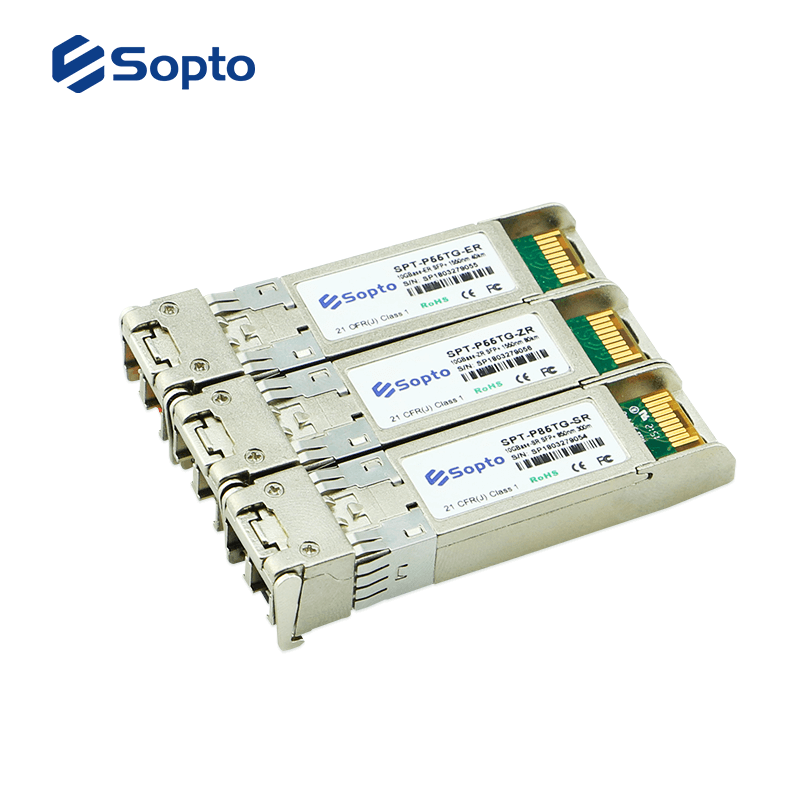
Sopto is a professional optical module manufacturer and supplier with many years of production experience. It can supply high-quality optical modules with various speeds and transmission distances, and can ensure compatibility with various other brands. If you are interested, please contact us. Email: [email protected]
Tags : sfp optical modules , Gigabit optical modules, sfp modules,10g sfp+
— END —




